Geothermal Climate

Can geothermal energy be a major source of power in colder climates ?
Geothermal energy, derived from the Earth's natural heat, can be a significant power source in colder climates. Key considerations include the availability of geothermal resources, technology and infrastructure, economic feasibility, environmental impact, and societal and regulatory factors. Challenges such as permafrost and public acceptance can be addressed through careful planning, technological innovation, and effective policy measures. If these factors are favorably aligned, geothermal energy could play a significant role in meeting the energy demands of colder regions while contributing to global efforts to combat climate change.

Is geothermal energy a practical solution for colder climates ?
Geothermal energy is a renewable source of energy that comes from the heat generated by the Earth's core. It has been used for centuries in various forms, such as hot springs and geysers. In recent years, there has been an increasing interest in using geothermal energy as an alternative to fossil fuels. But is it a practical solution for colder climates? Let's explore this question further. Advantages of Geothermal Energy in Colder Climates: 1. Reliable Source of Energy: Unlike other renewable sources like solar or wind power, which are dependent on weather conditions, geothermal energy can be harnessed all year round, regardless of the temperature outside. This makes it an ideal source of energy for colder climates where there may be long periods of ice and snow. 2. Low Emissions: Compared to fossil fuels, geothermal power plants produce significantly fewer greenhouse gases and air pollutants. This makes it an environmentally friendly option for communities looking to reduce their carbon footprint. 3. Cost-Effectiveness: While the initial cost of setting up a geothermal power plant can be high, the long-term costs are relatively low compared to other sources of energy. Once established, geothermal power plants require little maintenance and have a lifespan of several decades. This makes it a cost-effective solution for colder climates where energy demands are high due to heating needs. Challenges of Geothermal Energy in Colder Climates: 1. Limited Availability: One of the main challenges of using geothermal energy in colder climates is its limited availability. Not all areas have access to geothermal resources, and even those that do may not have enough heat to generate significant amounts of energy. This means that while geothermal energy can be a practical solution for some areas, it may not be feasible for others. 2. High Initial Costs: As mentioned earlier, the initial cost of setting up a geothermal power plant can be high. This can be a barrier for communities with limited financial resources or those without access to government subsidies or grants. Additionally, drilling equipment and expertise may need to be imported from other countries, adding to the overall cost. 3. Environmental Impact: While geothermal energy is generally considered to be environmentally friendly, there are still some potential impacts associated with its use. For example, drilling activities can disturb wildlife habitats and disrupt local ecosystems. Additionally, if not managed properly, geothermal power plants can release harmful chemicals into the atmosphere or nearby water sources. Conclusion: In conclusion, geothermal energy can be a practical solution for colder climates under certain conditions. Its reliability, low emissions, and cost-effectiveness make it an attractive option for communities looking to reduce their reliance on fossil fuels. However, its limited availability, high initial costs, and potential environmental impacts must also be considered before making any decisions about implementing geothermal energy projects in colder climates.
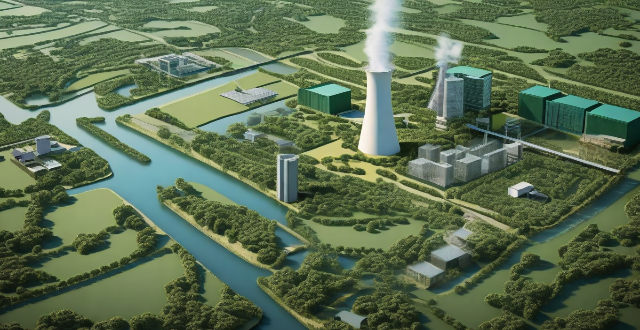
How does geothermal energy work and is it a viable alternative energy source ?
Geothermal energy is a renewable and sustainable source of energy that harnesses the natural heat from within the Earth's crust. This energy is obtained by drilling wells into the Earth's crust, where the heat is transferred to water or another fluid in a heat exchanger. The heated fluid then spins a turbine to generate electricity. There are three main types of geothermal power plants: dry steam, flash steam, and binary cycle. While geothermal energy has many benefits, including being renewable, cost-effective, and abundant in certain areas, it also comes with high upfront costs and location limitations. Additionally, there are environmental impacts associated with its use, such as potential contributions to earthquakes and impacts on local ecosystems. Despite these challenges, geothermal energy remains a valuable addition to our portfolio of renewable energy sources.

What are some examples of recent technological advancements in renewable energy sources ?
Renewable energy sources have been gaining momentum in recent years due to the increasing awareness of climate change and the need for sustainable alternatives to fossil fuels. Here are some examples of recent technological advancements in this field: - Solar Energy: Perovskite solar cells, bifacial solar panels, concentrated solar power (CSP) systems with efficient heat transfer fluids and storage systems. - Wind Energy: Floating wind turbines designed for deep waters, smart grid integration with improved forecasting techniques, demand response programs, and energy storage solutions. - Hydropower: Run-of-river systems that minimize environmental impact by utilizing natural river flow, low head hydropower installed in existing water infrastructure without significant modifications. - Geothermal Energy: Enhanced geothermal systems (EGS) with improved drilling techniques and efficient heat exchangers, low-temperature geothermal heat pumps harnessing warmth from Earth's surface even in colder climates. - Biomass Energy: Anaerobic digestion process breaking down organic matter to produce biogas for electricity generation or as a natural gas substitute, torrefaction converting biomass into coal-like substance called biocoal with higher energy density and potential applications in replacing coal in power plants and industrial processes.

What is the future of Climate-Smart Technology ?
The future of climate-smart technology is expected to be transformative, offering numerous ways to mitigate climate change and adapt to its effects. Key areas of development include renewable energy, energy efficiency, carbon capture and storage, water management, and agriculture. Emerging technologies such as artificial intelligence, blockchain, and the Internet of Things also have significant potential in this field. However, challenges such as cost, infrastructure, regulation, and public acceptance must be addressed to ensure widespread adoption and effectiveness.

What are some innovative technologies being developed to address climate change ?
The article provides a summary of innovative technologies being developed to address climate change. These include renewable energy sources such as solar, wind, hydroelectric, and geothermal power; carbon capture and storage (CCS) methods like post-combustion capture, oxy-fuel combustion, and pre-combustion capture; electric vehicles (EVs); smart grid technology; nuclear fusion; afforestation and reforestation; and green building design. These technologies aim to reduce greenhouse gas emissions, increase energy efficiency, and promote sustainable practices in order to combat climate change and transition towards a more sustainable future.

How can climate financing help developing countries ?
Climate financing is essential for developing countries to adapt to and mitigate climate change. It funds infrastructure projects, capacity building, renewable energy, sustainable land use, and research & development. These efforts help build resilient economies and reduce environmental impact.

How does hydropower compare to other forms of alternative energy ?
Hydropower, a form of renewable energy that uses water flow or fall to generate electricity, is compared with other alternative energies like solar, wind, geothermal, and biomass across various aspects: 1. **Cost-Effectiveness**: Hydropower has high setup costs but low operational expenses, while solar and wind require significant upfront investment for installation but have lower running costs. Geothermal can be expensive initially due to drilling and exploration, and biomass costs vary based on the type and conversion technology used. 2. **Reliability and Consistency**: Hydropower offers consistent power generation as long as water flow is maintained. Solar power's reliability depends on sunlight, wind power on wind patterns, geothermal power provides consistent power once established, and biomass needs a steady supply of material for consistency. 3. **Environmental Impact**: Hydropower can impact habitats and water temperature but produces no direct emissions. Solar power has a relatively low environmental impact during operation but considers the manufacturing process. Wind power is generally environmentally friendly, geothermal power releases fewer pollutants than fossil fuels, and biomass burning releases CO2 but is carbon-neutral. 4. **Energy Storage and Grid Integration**: Hydropower offers excellent energy storage capabilities. Solar and wind powers require energy storage solutions. Geothermal power doesn't typically require energy storage, while biomass can be stored and used as needed. 5. **Scalability and Deployment Speed**: Large-scale hydropower projects can take many years to build, whereas small-scale or run-of-river systems can be deployed faster. Solar power can scale from small residential systems to large farms, and wind farms can be built relatively quickly. Geothermal power's scalability depends on the resource available, and deployment can be slow due to requirements. Biomass ranges from small community digesters to larger power plants, with scalability being moderate.

What innovations in technology are helping to combat the climate emergency ?
Innovations in technology are helping to combat the climate emergency by developing solutions that mitigate its effects and contribute to a sustainable future. These include renewable energy sources, energy efficiency improvements, carbon capture and storage, green infrastructure, and circular economy principles. By embracing these innovations and continuing to develop new solutions, we can work together to address the challenges posed by climate change and create a healthier planet for future generations.

What is the role of renewable energy in combating climate change ?
The text discusses the role of renewable energy in combating climate change. It defines renewable energy as derived from natural processes that are constantly replenished, including solar, wind, hydroelectric, geothermal, and biomass energy. The importance of renewable energy is highlighted by its low carbon emissions, sustainability, and economic benefits. Renewable energy combats climate change by reducing greenhouse gas emissions, diversifying the energy mix, promoting energy efficiency, stimulating innovation, and enhancing environmental stewardship. The transition to renewable energy presents economic opportunities and promotes innovation, with a profound impact on slowing climate change.

What are some innovative ways that people are using to generate their own alternative energy at home ?
The provided text discusses innovative ways to generate alternative energy at home. It mentions various methods such as solar power (solar panels, solar water heaters, solar chargers), wind power (home wind turbines, vertical axis wind turbines), hydropower (micro hydro systems, rainwater harvesting), geothermal energy (ground source heat pumps, geothermal water heaters), and biomass energy (wood burning stoves, biogas digesters). The conclusion highlights the potential of these methods in reducing a household's carbon footprint and contributing to a sustainable future.

How can private sector participate in climate financing ?
Private sector participation in climate financing can take various forms, including direct investments in renewable energy projects, issuing green bonds or sustainable investment funds, carbon credit trading, R&D for innovative climate solutions, forming partnerships, adopting circular economy models, implementing eco-friendly business practices, maintaining transparency in environmental impact reporting, providing philanthropic support, and engaging employees in sustainability efforts. These actions not only mitigate climate change but also often improve corporate reputation and open new markets.
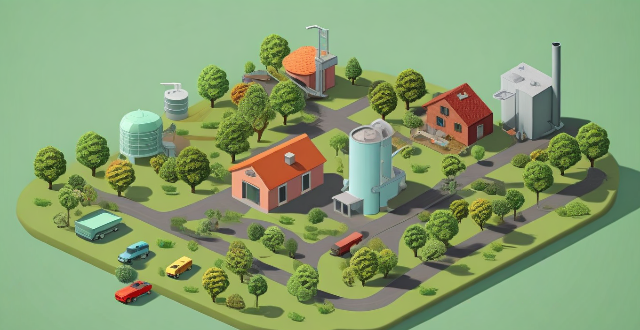
How can climate and environmental policies be adapted to address the challenges posed by climate change ?
To address the challenges posed by climate change, climate and environmental policies must be adapted to ensure they are robust, flexible, and capable of meeting the evolving needs of our planet. This can be done by setting clear and ambitious targets for reducing greenhouse gas emissions and developing strategies for adapting to the impacts of climate change that cannot be avoided. Promoting renewable energy sources, improving energy efficiency, investing in research and development, encouraging sustainable land use, strengthening international cooperation, educating the public and raising awareness, establishing carbon pricing mechanisms, and preparing for climate-related risks are also key steps. By adopting these measures, we can work together towards a sustainable future.
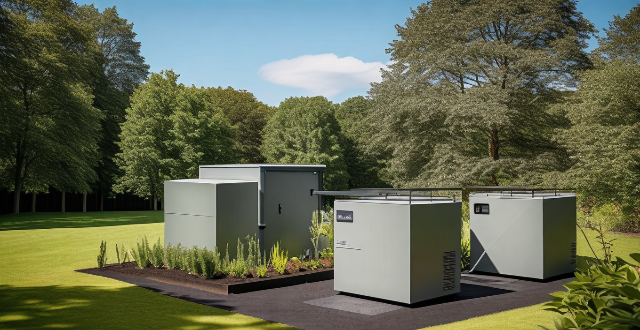
Can Climate-Smart Technologies help reduce global warming ?
Climate-smart technologies, designed to mitigate and adapt to climate change impacts, aim to reduce greenhouse gas emissions, enhance carbon sequestration, and improve resource efficiency. These technologies can help reduce global warming through energy efficiency, renewable energy, and carbon capture and storage. They also aid in adaptation through water management, agricultural innovation, and early warning systems. Co-benefits include resource conservation, economic growth, and health improvements. However, scaling up these technologies, policy support, and equity are challenges that need to be addressed for their successful implementation.

Are there any government incentives for producing or purchasing climate-friendly products ?
Governments worldwide have implemented various incentives to promote the production and purchase of climate-friendly products, such as tax breaks, subsidies, grants, and regulations. These initiatives aim to reduce greenhouse gas emissions and promote sustainable practices.
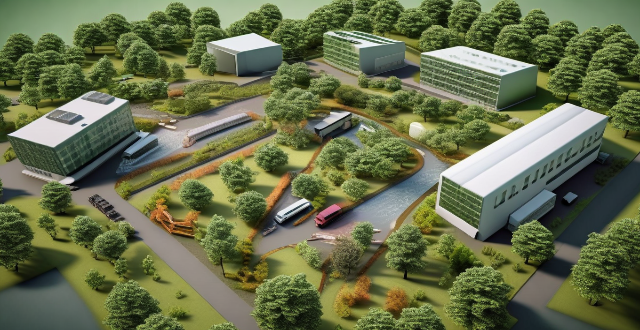
What innovations are needed to reach ambitious climate objectives ?
To reach ambitious climate objectives, innovations areTo reach ambitious climate objectives, innovations are renewable energy sources, carbon capture sustainable agriculture and forestry, circular economy and waste management, policy and finance, and education and awareness. Key areas include improved insulation technology, smart building management systems, electric vehicles, public transit efficiency, photovoltaic efficiency, offshore wind farms, enhanced geothermal systems, direct air capture, bioenergy with carbon capture and storage, precision farming, agroforestry, reforestation and afforestation, resource recovery, biodegradable materials, zero waste strategies, carbon pricing, green bonds, public-private partnerships, educational programs, and behavior change campaigns. Collaboration among governments, businesses, researchers, and citizens worldwide is crucial to drive these changes forward.

What industries have the most potential for developing climate-friendly products ?
The text discusses the potential of various industries in developing climate-friendly products. The industries mentioned include renewable energy, transportation, building industry, and agriculture. The renewable energy industry has great potential due to sources like solar, wind, hydroelectric, geothermal, and biomass energy. The transportation industry can develop electric vehicles, hybrid vehicles, and public transportation systems powered by renewable energy sources. The building industry can use green building materials, energy-efficient appliances, and smart home technology. The agriculture industry can adopt sustainable farming practices and produce eco-friendly food products. Investing in these industries and promoting sustainable practices can help mitigate the effects of climate change.

What role do renewable energy sources play in climate change adaptation ?
Renewable energy sources play a crucial role in climate change adaptation by reducing greenhouse gas emissions, promoting sustainable development, and enhancing energy security. By transitioning from fossil fuels to renewable energy sources, we can significantly reduce carbon dioxide emissions, which are a major contributor to global warming and climate change. Renewable energy sources are sustainable because they rely on natural processes that replenish themselves over time, unlike non-renewable resources like coal and oil. By using renewable energy sources, we can promote sustainable development that meets the needs of the present without compromising the ability of future generations to meet their own needs. Renewable energy sources provide a diversified energy mix that reduces dependence on imported fossil fuels, enhancing energy security for countries around the world.
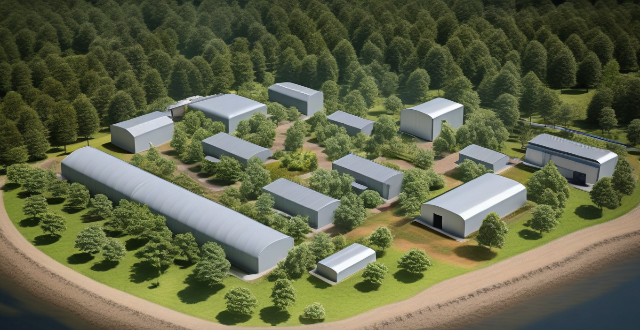
How does the Clean Energy Revolution impact climate change ?
The clean energy revolution, aimed at reducing greenhouse gas emissions and mitigating climate change, involves transitioning from fossil fuels to renewable sources like solar, wind, hydro, and geothermal power. This shift significantly reduces CO2 emissions, enhances energy efficiency in buildings, transportation, and industry, promotes sustainable practices such as waste reduction and reforestation, stimulates innovation in technologies like energy storage and carbon capture, and fosters international cooperation on climate action. Embracing the clean energy revolution is crucial for combating global warming and securing a sustainable future.

What is the role of renewable energy in achieving climate commitments ?
Renewable energy is a key component of global efforts to reduce greenhouse gas emissions and mitigate climate change, contributing to environmental protection, economic prosperity, and social well-being. It reduces carbon footprint, enhances energy security, stimulates economic growth, improves public health, supports sustainable development, advances technology and innovation, and contributes to international cooperation. The transition to renewable energy is crucial for meeting climate commitments and ensuring a sustainable future.

How can we prevent or reduce the impact of climate disasters ?
The provided text discusses measures to prevent or reduce the impact of climate disasters, which can be summarized as: 1. **Reducing Greenhouse Gas Emissions** by switching to renewable energy sources, improving energy efficiency, planting trees, and reducing deforestation. 2. **Adaptation Measures** such as building resilient infrastructure, implementing flood control measures, using drought-resistant crops, and establishing early warning systems. 3. **International Cooperation** through signing and implementing international agreements like the Paris Agreement and providing financial and technological support to vulnerable regions. 4. **Education and Awareness** initiatives that include educational programs and public campaigns about climate change. 5. **Research and Innovation** in climate modeling and clean technology development.

How is climate change legislation being implemented at the local government level ?
Local governments are implementing climate change legislation through various strategies, including adopting green building codes, promoting renewable energy development, implementing transit-oriented development policies, investing in infrastructure resilience, and promoting sustainable land use practices. These efforts aim to reduce greenhouse gas emissions, prepare for the impacts of climate change, and create more resilient and sustainable communities.

How can cities contribute to achieving global climate goals ?
Cities are pivotal in achieving global climate goals. They can significantly impact the environment and contribute to climate change, but also possess resources and innovation for sustainable solutions. Cities can contribute by reducing greenhouse gas emissions through energy efficiency and renewable energy, promoting sustainable land use with urban planning and green spaces, enhancing energy efficiency with building codes and smart grids, investing in clean technology for research and development, and engaging residents and businesses for education and awareness.

How has technology contributed to the development of climate-friendly products ?
Technology has played a crucial role in the development of climate-friendly products, including renewable energy sources, energy-efficient appliances, and sustainable transportation options. These advancements have enabled us to reduce our carbon footprint and create a more sustainable future.

How do climate change adaptation strategies impact national economies ?
Climate change adaptation strategies can have both positive and negative impacts on national economies. Positive impacts include job creation, economic growth, and energy security. Negative impacts include the cost of implementation, disruption to existing industries, and uncertainty and risk. Overall, investing in climate change adaptation strategies can lead to long-term benefits for national economies by mitigating the impacts of climate change and creating sustainable economic opportunities.

What role does climate-smart technology play in sustainable development goals (SDGs) ?
Climate-smart technology plays a crucial role in achieving the Sustainable Development Goals (SDGs) by mitigating climate change, promoting sustainable agriculture, and supporting economic growth while protecting the environment. It can help reduce poverty by providing access to clean energy, improve agricultural productivity and resilience, improve public health by reducing air pollution, achieve affordable and clean energy, and directly contribute to climate action through the reduction of greenhouse gas emissions and adaptation to the impacts of climate change. Additionally, it can enhance other SDGs indirectly by promoting sustainable practices across various sectors.

What actions have countries taken to meet their climate commitments ?
Countries have made commitments to reduce their carbon emissions and mitigate the impacts of climate change. They have taken various actions, including investing in renewable energy sources, improving energy efficiency, implementing carbon pricing mechanisms, focusing on forestry and land use practices, and promoting international cooperation. These efforts demonstrate a collective determination to address the urgent issue of climate change and create a more sustainable future for all.

What are the potential economic impacts of widespread adoption of Climate-Smart Technologies ?
The widespread adoption of climate-smart technologies has the potential to bring significant economic benefits, including job creation, energy savings, improved public health, and enhanced competitiveness for companies offering sustainable products and services. These technologies aim to reduce greenhouse gas emissions, adapt to the changing climate, and ensure food security while promoting sustainable development. By implementing energy-efficient measures and transitioning to renewable energy sources, businesses and households can significantly reduce their energy bills. Reducing air pollution and other environmental hazards through the adoption of clean technologies can lead to improved public health outcomes. Companies that adopt climate-smart technologies may gain a competitive advantage by offering more sustainable products and services. Overall, the adoption of climate-smart technologies presents numerous opportunities for economic growth and sustainability.

What are some examples of climate-smart technologies being used today ?
Climate-smart technologies are innovative solutions aimed at reducing greenhouse gas emissions, adapting to climate change, and promoting sustainable development. These technologies play a crucial role in mitigating the adverse effects of global warming and ensuring a resilient future for our planet. Examples of such technologies include renewable energy sources like solar power, wind energy, hydroelectric power, and geothermal energy; energy efficiency and conservation measures like LED lighting, energy-efficient appliances, building automation systems, and insulation and green building designs; transportation and mobility options like electric vehicles, hybrid vehicles, public transit, and aviation biofuels; and agricultural practices like precision farming, regenerative agriculture, agroforestry, and reforestation and afforestation. As we continue to innovate and adopt these solutions on a broader scale, we can make significant strides toward mitigating the impacts of global warming and ensuring a resilient planet for generations to come.